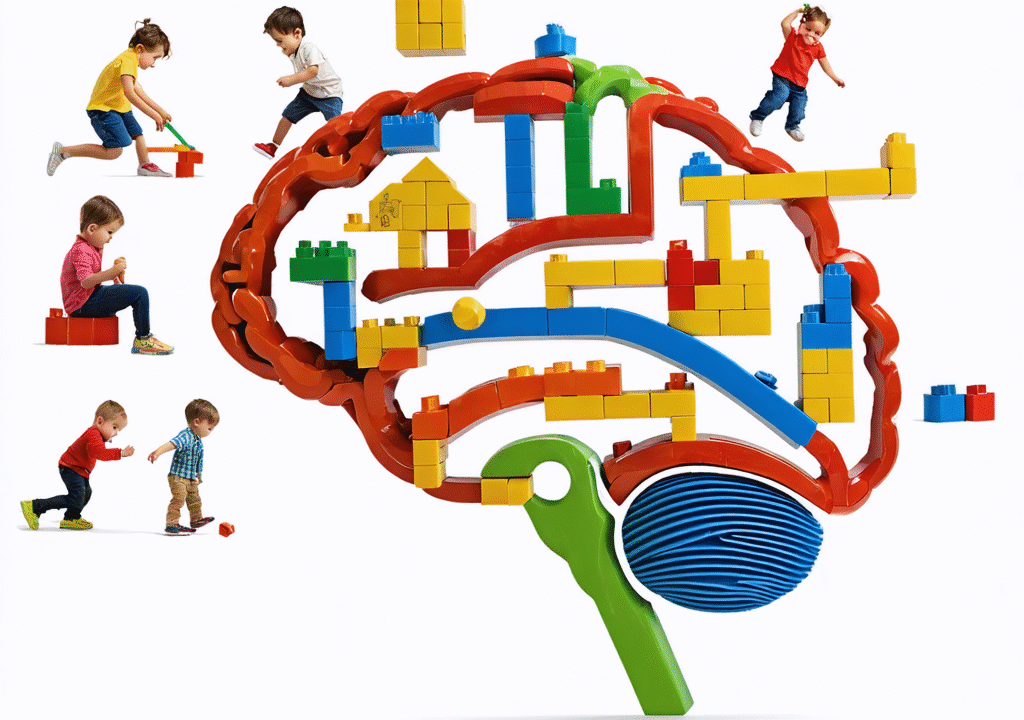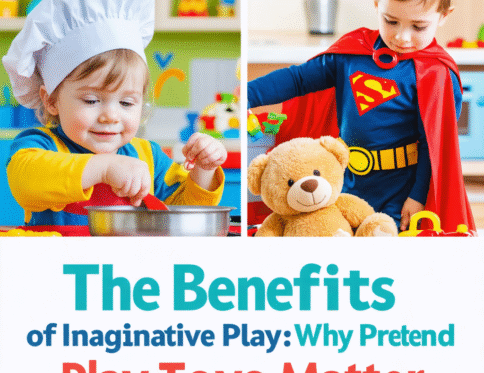At Kiddo Fun Store, we know playtime is more than just fun and games—it’s brain-building in action! Modern neuroscience reveals that every block stacked, puzzle solved, and pretend scenario acted out physically shapes your child’s growing mind.
In this post, we’ll explore the fascinating science behind play and share expert-backed tips for choosing toys that optimize cognitive, social, and emotional development.
Play Is a Child’s Superpower
Harvard’s Center on the Developing Child confirms that 90% of brain development happens before age 5. Play isn’t just entertainment—it’s the primary way children wire their brains for:
🔹 Problem-solving
🔹 Emotional regulation
🔹 Language acquisition
🔹 Social skills
Let’s break down the neuroscience behind different play types.
How Different Toys Build Young Brains
1. Building Blocks & Spatial Toys
What Happens in the Brain:
- Activates the parietal lobe (spatial reasoning)
- Strengthens prefrontal cortex (planning/executive function)
Proven Benefits:
✓ 20% higher math scores in elementary school (University of Delaware study)
✓ Better STEM skills long-term
Best Toys:
• Wooden blocks • Magna-Tiles • LEGO® DUPLO
2. Pretend Play & Dolls
What Happens in the Brain:
- Lights up the temporoparietal junction (empathy/social cognition)
- Develops the default mode network (creativity)
Proven Benefits:
✓ 30% more advanced language skills (University of Cambridge)
✓ Stronger emotional intelligence
Best Toys:
• Play kitchens • Dress-up costumes • Doctor kits
3. Puzzles & Problem-Solving Games
What Happens in the Brain:
- Engages the hippocampus (memory formation)
- Strengthens dopamine pathways (reward/motivation)
Proven Benefits:
✓ Improved working memory
✓ Higher frustration tolerance
Best Toys:
• Shape sorters • Peg puzzles • Rush Hour Jr.
4. Active Play & Ride-On Toys
What Happens in the Brain:
- Stimulates the cerebellum (coordination/balance)
- Boosts BDNF production (brain-derived neurotrophic factor)
Proven Benefits:
✓ 25% better focus in school (Journal of Pediatrics)
✓ Enhanced mood regulation
Best Toys:
• Balance bikes • Scooters • Tunnel playsets
The Dark Side of “Passive” Toys
Not all play is equal. Research shows that:
❌ Electronic toys with fixed functions (e.g., talking dolls) reduce parent-child interaction by 50% (AAP study)
❌ Screen-based games limit creative thinking vs. physical toys
What to avoid:
• Overly flashy, single-function toys
• Apps that replace hands-on play
Age-by-Age Brain-Boosting Toy Guide
0-12 Months
Focus: Sensory-motor development
• High-contrast mobiles • Texture balls • Soft mirrors
1-3 Years
Focus: Language & symbolic thinking
• Stacking rings • Push toys • First pretend sets
3-5 Years
Focus: Executive function
• Memory games • Dress-up • Magnatiles
5+ Years
Focus: Abstract reasoning
• Science kits • Strategy games • Coding robots
3 Science-Backed Toy Shopping Tips
- Follow the “10% Challenge” – Choose toys where the child does 90% of the work (e.g., blocks > battery-operated toys)
- Prioritize “Open-Ended” Play – Toys with infinite uses (e.g., wooden blocks) build more neural pathways
- Rotate Toys Monthly – Fresh stimulation prevents habituation
Play Today, Brighter Tomorrow
The toys you choose today literally shape your child’s future brain architecture. At Kiddo Fun Store, every toy is handpicked to nurture growing minds through play-powered learning.
What brain-building toy does your child love? Tell us in the comments!
Explore our science-backed toy collection at kiddofunstore.com



